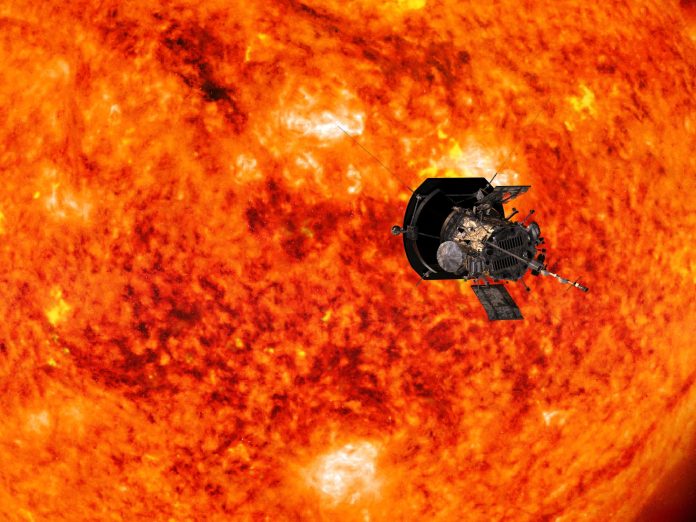Parker Solar Probe is operating normally after passing just 6.1 million kilometers above the Sun’s surface, NASA says.
The United States space agency has confirmed its Parker Solar Probe is safe after making the closest approach to the Sun ever recorded by a human-made object.
The probe passed just 6.1 million kilometers (3.8 million miles) above the Sun’s surface on December 24, the National Aeronautics and Space Administration (NASA) said early on Friday.
It flew into the Sun’s outer atmosphere — known as the corona — “at a blazing 430,000 miles per hour [692km/h] — faster than any human-made object has ever moved”, the agency reported.
NASA said its team had received a beacon signal late on Thursday, confirming that the probe had made its approach successfully and was operating normally.
“Flying this close to the Sun is a historic moment in humanity’s first mission to a star,” Nicky Fox, head of the Science Mission Directorate at NASA headquarters in Washington, DC, said in a statement.
Parker Solar Probe has made history.
After seven days of silence, Parker has resumed communication with Earth, confirming it’s healthy after soaring just 3.8 million miles from the solar surface — the closest a human-made object has ever been to a star. pic.twitter.com/UMCNq0BzhA
— NASA Sun & Space (@NASASun) December 27, 2024
Scientists are hoping that the probe, which was launched in 2018, will help them learn more about Earth’s closest star.
“By studying the Sun up close, we can better understand its impacts throughout our solar system, including on the technology we use daily on Earth and in space, as well as learn about the workings of stars across the universe to aid in our search for habitable worlds beyond our home planet,” Fox said.
The craft is equipped with a shield that protects it from extreme heat in the Sun’s corona and can withstand temperatures as high as 1,400 degrees Celsius (2,600 degrees Fahrenheit), NASA has explained.
With its close brush complete, the Parker Solar Probe is expected to circle the Sun at this distance through at least September.
The craft is expected to send detailed telemetry data about its status on January 1, NASA said.
Amitabha Ghosh, a NASA scientist, said experts still do not know so much about the Sun despite its monumental importance for life on Earth.
“If the Sun was to stop shining even for a day, all life on Earth would be destroyed. We are so very dependent on the Sun and yet we know so very little,” Ghosh told Al Jazeera.
He said the information that may be gleaned from the Parker Solar Probe could answer a series of important questions, including how the Sun heats up, how it transmits that heat, and what makes up what’s known as solar wind.
“These are very important scientific questions to understand,” Ghosh said.
Parker Solar Probe has phoned home!
After passing just 3.8 million miles from the solar surface on Dec. 24 — the closest solar flyby in history — we have received Parker Solar Probe’s beacon tone confirming the spacecraft is safe.
— NASA Sun & Space (@NASASun) December 27, 2024




